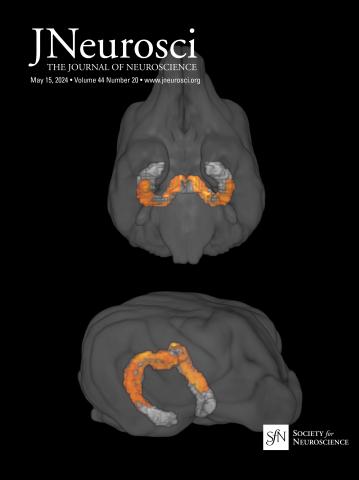Evidence for an evolutionary continuity in social dominance: Insights from non-human primates tractography.
IF 4
2区 医学
Q1 NEUROSCIENCES
引用次数: 0
Abstract
The dynamics of social dominance play a significant role in regulating access to resources and influencing reproductive success and survival in non-human primates. These dynamics are based on aggressive and submissive interactions which create distinct, hierarchically organised social structures. In humans, whose social behaviour is similarly organised, the use of brain imaging based on tractography has identified key neuronal networks of the limbic system underlying social behaviour. Among them, the uncinate fasciculus and the cingulum bundle, have been associated with aggression and some disorders such as psychopathy.In this study, we have used advanced tractography to study the anatomy of connections underlying social dominance in a colony of 15 female squirrel monkeys (Saimiri sciureus). We correlated biostructural properties of the uncinate fasciculus and cingulum with behavioural hierarchy measures while controlling for factors such as age, weight, handedness, brain size, and hormonal influences. The fornix, a limbic connection involved in memory, was also included as control tract. Our findings indicate a significant correlation between the integrity of the right uncinate fasciculus and social dominance measures, including normalised David's scores, aggressive behaviours, and submissive behaviours. Trends observed in the left uncinate fasciculus hint at potential bilateral involvement with a right hemispheric lateralisation. These results are consistent with human studies linking the uncinate fasciculus to social aggression and disorders, suggesting an evolutionary continuity in the neuro-anatomical substrates of social dominance back to at least 35 million yearsSignificance Statement In non-human primates, social dominance determines resource access and impacts survival and reproduction. In this study, we used advanced tractography to study the anatomy of connections related to social dominance focusing on limbic regions such as the uncinate fasciculus and cingulum. We found a strong correlation between the integrity of the right uncinate fasciculus and social dominance measures including hierarchy, aggressive and submissive behaviours. These results suggest an evolutionary continuity in the neuro-anatomical substrates of social dominance back to at least 35 million years.社会支配地位的进化连续性证据:来自非人类灵长类动物神经束成像的见解。
在非人类灵长类动物中,社会支配的动态在调节资源获取和影响生殖成功和生存方面发挥着重要作用。这些动态是基于侵略性和顺从性的互动,创造了独特的、有等级组织的社会结构。人类的社会行为也有类似的组织,利用基于神经束造影的脑成像技术已经确定了社会行为背后的边缘系统的关键神经网络。其中钩状束和扣带束与攻击性和一些疾病如精神病有关。在这项研究中,我们利用先进的神经束造影技术研究了15只雌性松鼠猴(Saimiri sciureus)群体中潜在社会优势的连接解剖学。我们将钩侧束和扣带的生物结构特性与行为等级测量相关联,同时控制了年龄、体重、惯用手、脑大小和激素影响等因素。穹窿,一个与记忆有关的边缘连接,也被包括在控制束中。我们的研究结果表明,右钩状肌束的完整性与社会支配性测量之间存在显著的相关性,包括正常化的大卫分数、攻击行为和顺从行为。在左钩状肌束观察到的趋势提示潜在的双侧受累与右半球偏侧。这些结果与人类研究相一致,将钩状束与社会攻击和社会障碍联系起来,表明社会支配的神经解剖学基础的进化连续性至少可以追溯到3500万年前。在非人类灵长类动物中,社会支配决定资源获取并影响生存和繁殖。在这项研究中,我们使用先进的神经束造影技术来研究与社会支配相关的连接解剖学,重点研究边缘区域,如钩状束和扣带。我们发现,右钩状肌束的完整性与社会支配性措施(包括等级制度、攻击性和顺从行为)之间存在很强的相关性。这些结果表明,社会支配的神经解剖学基础的进化连续性至少可以追溯到3500万年前。
本文章由计算机程序翻译,如有差异,请以英文原文为准。
求助全文
约1分钟内获得全文
求助全文
来源期刊

Journal of Neuroscience
医学-神经科学
CiteScore
9.30
自引率
3.80%
发文量
1164
审稿时长
12 months
期刊介绍:
JNeurosci (ISSN 0270-6474) is an official journal of the Society for Neuroscience. It is published weekly by the Society, fifty weeks a year, one volume a year. JNeurosci publishes papers on a broad range of topics of general interest to those working on the nervous system. Authors now have an Open Choice option for their published articles
 求助内容:
求助内容: 应助结果提醒方式:
应助结果提醒方式:


